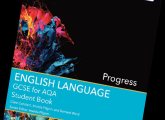The reasoning behind geometrical constructions offers opportunities for students to develop their understanding of points and lines, says Colin Foster…
Geometrical constructions such as perpendicular bisectors and angle bisectors are often given to students as procedures to follow, and students don’t always understand why the procedures that they have been taught produce the construction of that name. For example, why does the procedure for drawing a perpendicular bisector of a line segment actually bisect it? And why does it do so at right angles? In this lesson, students are encouraged to think about why this construction works and how they might justify it. They are provided with ample opportunity to practise the technique on a coordinate grid and improve their precision while also exploring the points through which their perpendicular bisectors pass. Attempting to find line segments whose perpendicular bisectors pass through or near to the origin gives students a reason to be accurate in their constructions. They have to think carefully about the relationship between the ends of the line segment and the direction of the perpendicular bisector in order to anticipate where the perpendicular bisectors of their chosen line segments will go.
Why Teach This?
Visualisation and spatial reasoning are important skills that enable us to make sense of geometrical situations and predict how points and lines will behave. This lesson gives students the opportunity to examine positions that are the same distance from two fixed points.
Starter activity
Q. I want you imagine two identical circles next to each other, one on the left and one on the right. (Close your eyes if that helps.) Now imagine that the circles slowly move closer together until they overlap. Can you describe what you see?
The circles overlap at two positions. A student could draw on the board what they see, or you could draw or project this image on the board:
Q. I’m going to join up the centres of the two circles with a purple line.
Q. Now, in red, I’m going to join up the two points where the circles intersect.
Q. What can you say about the red line?
Students will probably say that is vertical, or at right angles (perpendicular) to the horizontal line.
Q. How do you know that the purple and red lines are perpendicular?
This is quite hard to justify rigorously, without vague references to “symmetry”, and students could discuss this in pairs. To see why the angles created must be right angles could involve drawing in some additional lines, such as the blue lines below, creating the blue rhombus (it is a rhombus since all of the sides are equal to the radius of the circles).
Now we have two pairs of congruent isosceles triangles (shown below): one pair with the purple length as the third side, and one pair with the red length as the third side. These isosceles triangles mean that we have pairs of equal angles, shown shaded below.
So in the original diagram this means that the four black angles in the centre must be equal to each other, and since they add up to 360° each one must be 90°. Students are likely to need help putting these ideas together to make a convincing argument.
This means that two overlapping circles of the same size gives us a good way to construct right angles. Students will probably have seen this perpendicular bisector construction before, but may not have thought very carefully about why it works.
Main activity
Put some axes on the board from –5 to 5 both ways. Q. Can someone tell me where to plot the points (–1, 3) and (3, 4), please. Students could come to the board to show where the points are. If no mistakes are made, you could ask students what mistakes someone might make, if you think that these could arise in the class. For example, coordinates might be plotted the wrong way round, such as (4, 3) instead of (3, 4), or negative numbers might cause confusion, so students might plot (1, 3) instead of (–1, 3), for example. Q. Let’s label (–1, 3) as A and (3, 4) as B. Can you tell me a point that is exactly the same distance from A as it is from B? Students will probably say (1, 3), and you can put a cross there. Q. And another? And another? This is harder now. Place a cross at whatever points students say, unless other students object, in which case ask them to say why they object. Carry on until you have 4 or 5 points. Because of the visual effect of the axes, some students may think that points such as (0, 5) are nearer to A than to B. Students could measure or count squares to decide whether they agree or not. Students may suggest points that don’t have integer coordinates, which is fine. Q. What’s happening? Why? Try to get students to describe what they see in words. A line is being formed that is at right angles to a line joining A and B. They might use words like perpendicular bisector – if they don’t, then you could – or they might try to find an equation for the new line (e.g., 2x + y = 5 or y = –2x + 5). Students may not immediately see how this relates back to the starter. If they carry out the construction for a perpendicular bisector of AB they will get the line that passes through the points marked with a cross. See if they can explain why this is. Q. Draw some more axes from –5 to 5 both ways and plot the points (–3, 3) and (1, 4), please. Construct the perpendicular bisector. Does it go through the origin? This is a good test of accuracy, because the perpendicular bisector goes near to the origin but doesn’t pass through it exactly. Q. I want you to construct the perpendicular bisectors to these line segments and decide which one passes closest to the origin: Line 1: (0, 2) to (2, 1) Line 2: (0, 3) to (3, –1) Line 3: (–1, 2) to (2, –2) Line 4: (–3, –4) to (2, 5) Line 5: (–3, –2) to (2, 3) You need to do it very accurately to be sure! What other pairs of points can you find that have perpendicular bisectors that pass near to the origin? To estimate the closest distance of the perpendicular bisectors from the origin, students could measure by eye with a ruler or use a set square to help. Another way would be to make an accurate drawing on a large piece of paper and then use compasses to construct a perpendicular line from the origin to the perpendicular bisector, and then measure the length of this line. (If a perpendicular bisector passes very close to the origin, this will be a bit fiddly, but it will be easier with lines that do not approach the origin so closely.) Students could make a poster to illustrate their “best” examples. You could conclude the lesson with a plenary in which students talk about the examples that they have found and what they have learned. They should have had ample opportunity to practise their skills in constructing perpendicular bisectors. They might also have become more adept at anticipating where such lines will go. The five lines given all pass quite close to the origin. The order of the lines, in terms of how close they get to the origin, is: 5 < 2 < 4 < 1 < 3. Line 5 passes through the origin exactly. The approximate distances are given in the table below. 1 0.22 2 0.10 3 0.30 4 0.19 5 0.00 What other points did students choose and how close did the associated perpendicular bisectors get to the origin? To check students’ work it may be useful to know that in general the closest distance from the origin to the perpendicular bisector of the line segment joining (a, b) to (c, d) (assuming that these two points are different) is given by. So for the example in which the line segment went from (–3, 3) to (1, 4) this gives a distance of 0.12 (correct to 2 decimal places).
Additional resources
A natural environment for exploring perpendicular bisectors is that provided by Geogebra, which is available free of charge from www.geogebra.org/cms/en. It is easy to generate a perpendicular bisector of a line segment and then move the ends of the line segment around and see what happens to the perpendicular bisector.
Stretch them further
Confident students could choose three points and construct the perpendicular bisectors of the line segments joining each pair of points. Provided that these points are not collinear (lie on a straight line), they will form a triangle, and the perpendicular bisectors of a triangle are coincident – i.e., they all pass through the same point. This point is called the circumcentre of the triangle, and a circle (the circumcircle) can be drawn, with this point as its centre, passing through all three vertices of the triangle. Students could try to find a triangle whose circumcentre is the origin. (One example would be the triangle with vertices at (-1, 3), (3, -1) and (1, -3).)
About our expert
Colin Foster is an Assistant Professor in mathematics education in the School of Education at the University of Nottingham. He has written many books and articles for mathematics teachers (see www.foster77.co.uk).










